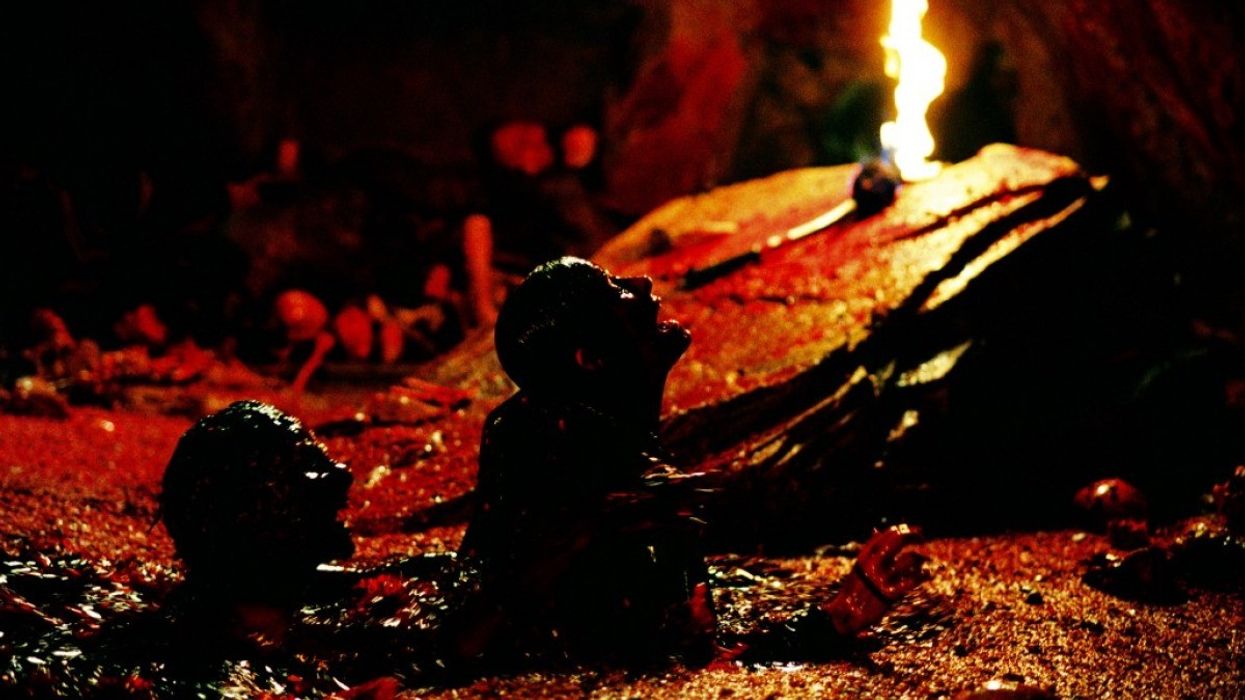How Horror Filmmakers Succeed (and Fail) at Using Darkness in Their Movies
Darkness is the lifeblood of horror film, but it's not as easy to use as you might think.

As children, darkness held everything that made us fearful of the world around us. Horror filmmakers know this, which is why they use it to terrify us in our adulthoods like the sadists they are.
But how, exactly, do they manage to pull it off? Is it as simple as killing the lights and playing eery music? What cinematic techniques do filmmakers use to make darkness one of the most popular tropes in horror film?
In this video, Lights Out director David Sandberg (a.k.a. ponysmasher) not only goes over how filmmakers use darkness in their films but the difficulties they encounter when using it in their movies, as well. Check it out below.
Why is Darkness Scary?
Horror and darkness go together like machetes and Jason Voorhees, but why exactly? Is it enough to say that darkness is scary?
Yes, but let me try to explain it—or maybe complicate it.
Human beings really, really like the information they get from visual stimuli because it allows them to assess their surroundings accurately. Imagine walking into a room—if it's fully lit, you'll be able to determine right away if it's full of, say, adorable puppies or bloodthirsty (and very hungry) rodents. If it's not fully lit, however, you won't be able to make that determination. When there's an absence of this visual stimuli, our instinct most of the time is to perceive threats. To put it more simply, we're afraid of the dark because we can't see what's lurking around us. It's the fear of the unknown.
Why Do Horror Films Use Darkness?
I mean, this goes without saying, right? If darkness is scary, then horror will use darkness. Duh.
However, filmmakers use the absence of light to take advantage of our very human impulses. For example, when audiences can't see part of the frame, they'll fill it in with what they imagine in their own minds. If that frame is part of a horror film and all of the classic horror tropes are running at full steam (creepy music, horrified faces, slow dolly-ins, etc.), then the audience will fill the frame with some scary shit. You're not imagining an ax-wielding murderer when a rom-com character walks into their dark bedrooms. /pedanticexplanation
How Do Horror Films Use Darkness?
And now we get to the action phase. You're making a horror flick and you know it's going to be drenched in darkness, but you want to be clever and creative with it. Lovely!
Having your character walk into a dark room and having a scary monster jump out seems too easy, right? That's what everybody does. What are some great examples of unique uses of darkness in horror film?
Lights Out
Lights Out, directed by Sandberg, plays with light and darkness throughout the entire film. The film's opening scene in the textile factory, in particular, stands out as an expert and clever use of these things. As Esther is leaving for the night, she turns off the lights and sees a strange silhouette in the doorway across the room. She flips the lights back on and it's gone. She turns them off and there it is again, in the same place. This off/on thing goes on a few times, until the final time she turns the lights off and the silhouette is now standing next to her.
The Descent
There aren't a whole lot of contemporary films that scare me, but The Descent scared me. A lot. And no, the thought of spelunking into a cave and encountering a bunch of flesh-eating humanoid creatures isn't particularly frightening to me, but the way directors Neil Marshall and Jon Harris used light and shadow in the film definitely put me on the edge of my seat. This is because they so effectively place you in that cave with tight framing and darkness. When those nasty creatures are finally revealed, it's thanks to the very selective and limited use of light they employed throughout the film.
The Babadook
In director Jennifer Kent's The Babadook, darkness is used not only as a visual vehicle for fear but as a thematic vehicle, as well. Despite her son Samuel's cries to "don't let it in," Amelia loses control and brings the darkness of her inner torment and grief into the physical realm of her home. In the final climactic scene, two figures emerge from this darkness: her deceased husband, which represents stability, and The Babadook, which represents powerlessness. This is her moment of clarity, when she's able to relive the moment of her husband's death, grieve, and realizes that what she needs to do is assert herself and gain back the control The Babadook stole from her.
What are your favorite uses of darkness in film? Let us know down in the comments.
Source: ponysmasher
















